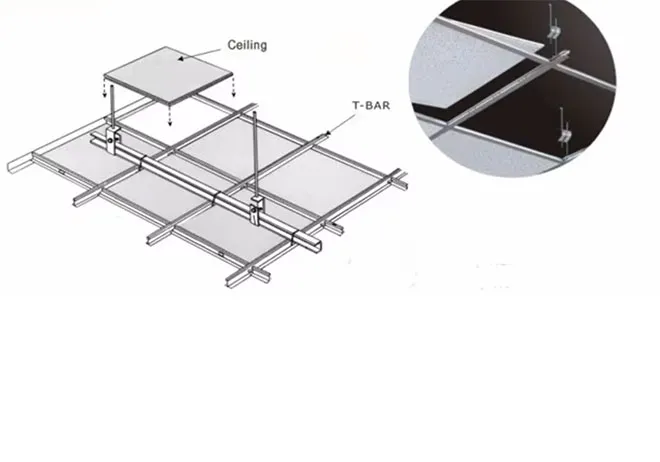Dec . 04, 2024 16:33 Back to list
Exploring Innovations in Main T Ceiling Design and Functionality for Modern Spaces
Exploring Main T Ceiling Understanding Its Impact and Importance
The term main T ceiling frequently arises in discussions surrounding interior design, architecture, and construction. A main T ceiling refers to a type of suspended ceiling system commonly used in commercial spaces such as offices, schools, and retail environments. This article will explore the significance of main T ceilings, their design features, benefits, and how they contribute to the overall functionality and aesthetics of a space.
What is a Main T Ceiling?
A main T ceiling is characterized by its grid-like structure, which consists of a framework of metal T-shaped channels suspended from the original ceiling. These channels create a grid that supports acoustic tiles, plaster panels, or other materials, providing a finished ceiling surface that conceals structural elements such as ductwork, electrical wiring, and plumbing. The main T specifically refers to the long, horizontal T-bars that run throughout the grid, with shorter cross members called cross tees completing the framework.
Design Considerations
When designing a space with a main T ceiling, several factors come into play. The height of the ceiling, the type of materials used, and the room's purpose all influence the final design. Main T ceilings can be easily customized to fit various aesthetics, incorporating different colors, textures, and tile styles. One crucial aspect is the selection of acoustic tiles, which can help minimize noise—a particularly beneficial quality in busy environments like offices and schools.
Another design consideration is the integration of lighting fixtures. Main T ceilings accommodate a variety of lighting options, including recessed lights and pendant fixtures. This flexibility enables designers to create a well-lit atmosphere that enhances productivity while also contributing to the room's overall ambiance.
Benefits of Main T Ceilings
main t ceiling

1. Aesthetic Appeal A main T ceiling offers a clean and contemporary look that can elevate the visual appeal of a space. By choosing stylish tiles and effective lighting solutions, designers can create an inviting environment conducive to work and collaboration.
2. Acoustic Control One of the primary advantages of a main T ceiling is its ability to improve sound quality within a room. By utilizing acoustic tiles, organizations can dampen noise levels, making it easier for employees or students to focus on tasks without distractions.
3. Accessibility and Maintenance Main T ceilings provide easy access to the spaces above the tiles. This accessibility is essential for routine maintenance and repairs, allowing technicians to reach electrical or HVAC systems without extensive disruption.
4. Energy Efficiency The insulation properties of certain ceiling tiles can contribute to energy efficiency by helping to regulate indoor temperatures. This aspect can lead to reduced heating and cooling costs, providing long-term savings for businesses.
5. Fire Safety Many acoustic tiles and ceiling materials are specially designed to be fire-resistant, contributing to the overall safety of the building. This feature is particularly critical in commercial settings where large groups of people gather.
Conclusion
In summary, the main T ceiling is a versatile and functional design element that plays a significant role in modern architecture and interior design. Its ability to enhance aesthetics, improve acoustic quality, enable easy access for maintenance, and contribute to energy efficiency makes it a popular choice for various spaces. As the landscape of workplace environments continues to evolve, the importance of thoughtful design features like main T ceilings cannot be overstated. Whether transforming a corporate office or a school classroom, the main T ceiling serves as a key component in creating spaces that are not only functional but also foster creativity and productivity. As we continue to innovate within the realms of architecture and interior design, the main T ceiling will undoubtedly remain an essential element in our built environments.
-
Quality Ceiling Trap Doors & Access Panels | Easy & Secure AccessNewsAug.30,2025
-
Durable Ceiling T Grid Systems | Easy InstallationNewsAug.29,2025
-
PVC Gypsum Ceiling: Durable, Laminated Tiles for Modern SpacesNewsAug.28,2025
-
Pvc Gypsum Ceiling Is DurableNewsAug.21,2025
-
Mineral Fiber Board Is DurableNewsAug.21,2025
-
Ceiling Tile Clip Reusable DesignNewsAug.21,2025







